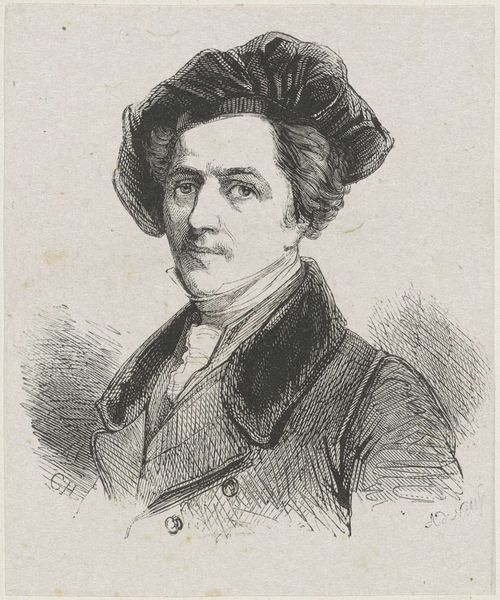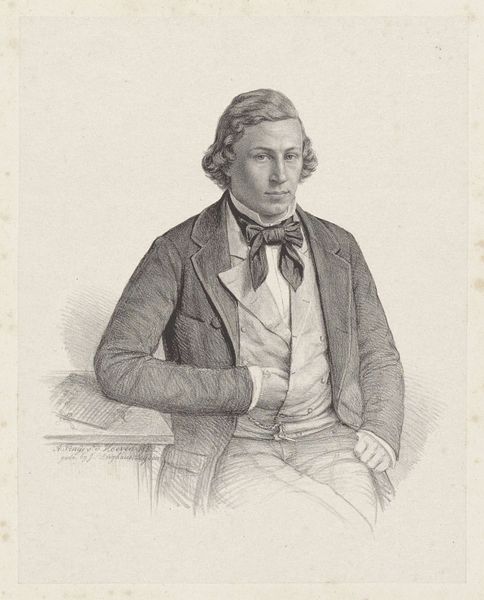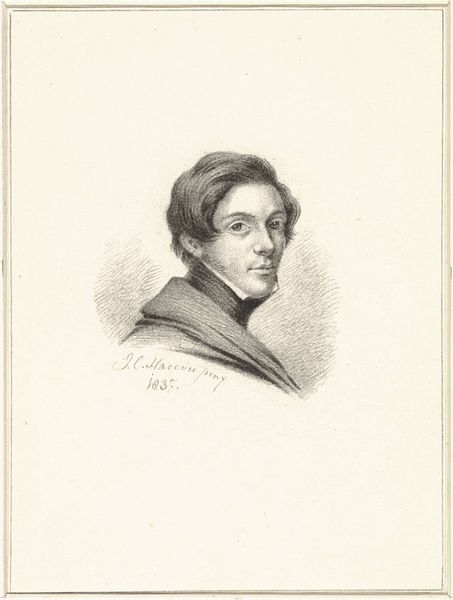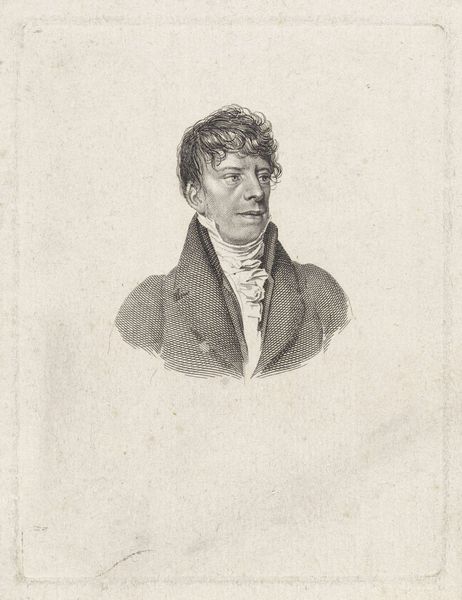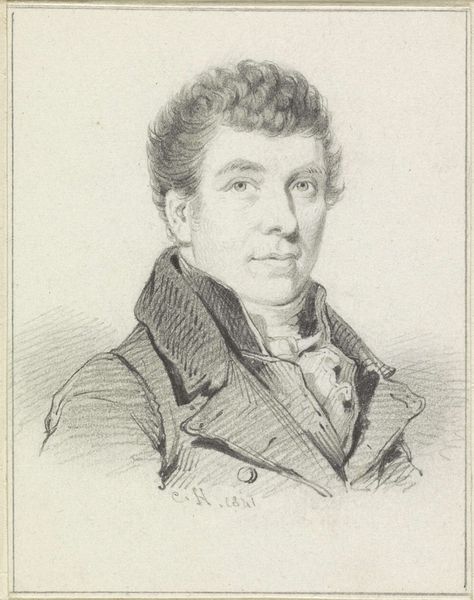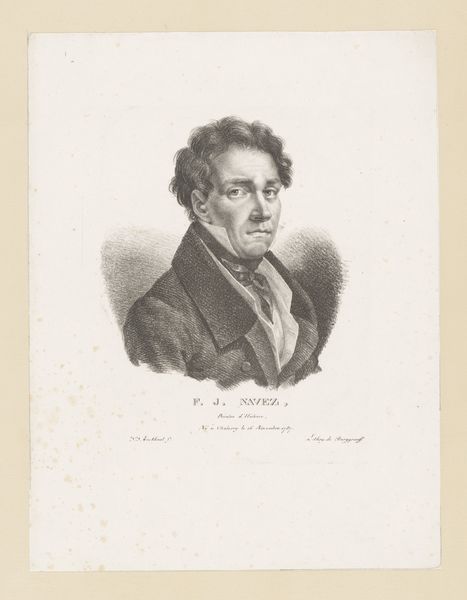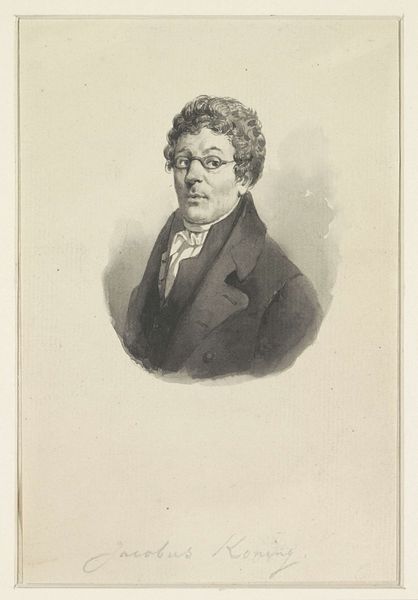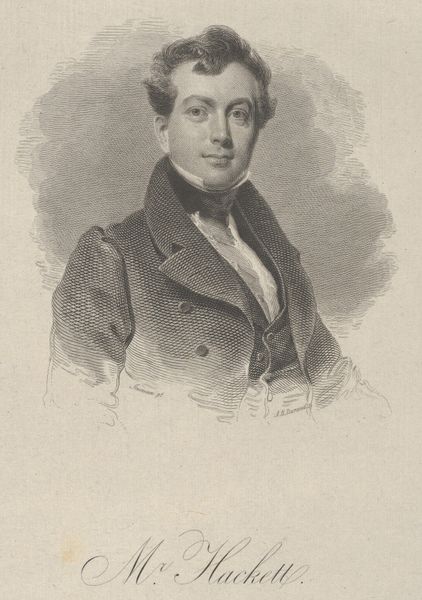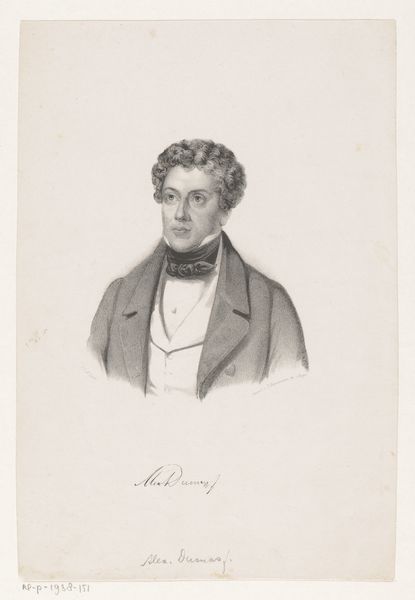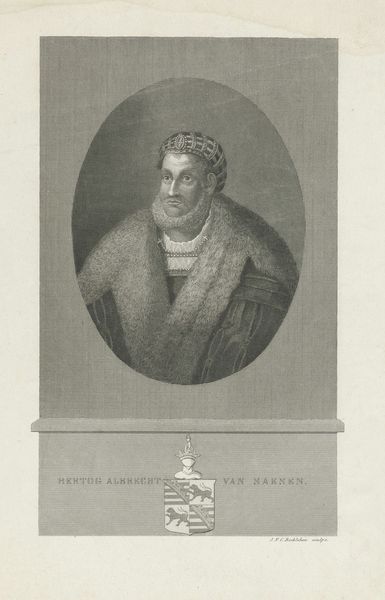
drawing, print, graphite
#
portrait
#
pencil drawn
#
drawing
#
neoclacissism
# print
#
pencil sketch
#
charcoal drawing
#
pencil drawing
#
line
#
graphite
#
portrait drawing
#
graphite
Dimensions: height 272 mm, width 218 mm
Copyright: Rijks Museum: Open Domain
Editor: Here we have a portrait of the violinist Charles de Beriot, a graphite drawing created in 1829 by Maxim Gauci. It feels like a study in contrasts – soft lines creating a delicate but very assured representation of this musician. How do you read this piece? Curator: What strikes me is the almost performative aspect of the portrait. Gauci captures de Beriot not just as an individual, but as a figure embodying a particular moment in social and artistic history. How might de Beriot’s status as a "virtuoso" musician, closely associated with the courts of both the Netherlands and France, influence the way we perceive the portrait’s construction of masculinity and power? Editor: So you are suggesting the image isn't neutral but a construct reflecting his social standing? Curator: Precisely! Consider how the Neoclassical style, with its emphasis on reason and order, served the interests of those in power during this era. Doesn't de Beriot's gaze, averted yet confident, hint at a negotiation between artistic expression and the constraints of societal expectations? And, who was this portrait for? What purpose did it serve? Editor: That's a perspective I hadn't fully considered. Looking at it again, it makes me wonder about the role of patronage in shaping artistic expression during the 19th century. Curator: Exactly. Examining the social context enables us to ask probing questions about representation, power, and the individual’s place within larger socio-political structures. How does this resonate with you? Editor: This discussion has definitely deepened my understanding, taking it beyond just aesthetic appreciation. Now I see how social structures of that time had influenced this portrait, especially considering the subject's position in society. Thanks! Curator: Indeed! Art offers profound opportunities to understand history as well as culture through new eyes.
Comments
No comments
Be the first to comment and join the conversation on the ultimate creative platform.
